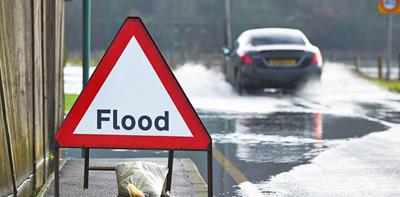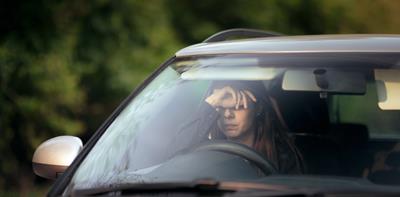
If you’ve got a dog-eared old version of the Highway Code hidden in a bookshelf somewhere, then it’s probably out of date as the rules of the road frequently change and can easily go unnoticed.
To help you keep on top of the latest changes, we’ve gathered the new rules and laws that are coming into force this year.
Here are the key rule changes to look out for.
1. Tougher rules on using mobiles at the wheel
Drivers face tougher road safety laws in 2022 with a clampdown on mobile phone use at the wheel[1].
It is already illegal to call or text on hand-held phones while driving, unless it is an emergency, and drivers caught breaking the rules will face a £200 fine and six licence points. But the new law will also ban drivers from using hand-held devices to take photos, play games or search playlists. This includes while your car is stopped at traffic lights or in motorway queues.
Motorists will still be allowed to use hands-free devices - such as a sat-nav or mobile phone - if secured in a cradle. Also, drivers will be allowed to use a handheld device to make a contactless payment while stationary, which means you can pay with a card reader at a drive-thru or road toll.
2. Technology to limit speeds
All new UK cars could be fitted with a special gadget to stop drivers from speeding from July 2022[2]. The new rules to make this technology mandatory were provisionally agreed by the EU, but it is expected to also apply in the UK, which after Brexit has retained most EU laws for new cars to help standardise car manufacturing across Europe.
This new Intelligent Speed Assistance (ISA) technology will alert drivers when they are going too fast. It will then automatically limit the engine power and a vehicle's speed if the driver does not slow down themselves, although the system can be overridden, or temporarily switched off if necessary.
Road safety campaigners argue the technology not only improves road safety, but also reduces emissions, therefore saving fuel, helping the environment as well as helping drivers to avoid speeding fines[3].
So while this may feel a little bit on the big brother side for some, there are many benefits to ISA technology.
3. A decision on personal e-scooters
E-scooters, or electric scooters, are becoming increasingly popular in the UK and beyond. But they’re controversial and, with the exception of some hire schemes, it’s illegal to ride an e-scooter on public roads, cycle lanes or pavements in the UK.
However, E-scooters have been legalised in some parts of the world and there is pressure on the UK to follow suit. The government is consulting on whether to change the law to make e-scooter use legal and is set to deliver a verdict in March 2022[4]. So one to watch, and we will keep you posted on any developments.
4. The first self-driving cars
Motorists could see self-driving cars on British roads for the first time in 2022.
According to news reports[5], motorists driving on motorways could be given a green light by the government to legally use Automated Lane Keeping Systems (ALKS) that are fitted to some of the latest car models.
Classed as ‘self-driving’ technology, ALKS enables a vehicle to drive itself in a single lane, while maintaining the ability to return control easily and safely to the driver when required[6] - the person at the wheel must be ready at all times to step in to take over at the system's request.
It is hoped that ALKS could help improve road safety by reducing human error, which contributes to more than 85% of accidents[7]. The technology could also improve access to transport for people with mobility issues and lead to more reliable public transport.
5. Stopping at Zebra crossings
The rules for stopping at pedestrian crossings changed in January 2022.
Slightly surprisingly, previously, drivers were only required to stop at zebra crossings if pedestrians were already on the crossing. But under Highway Code changes, drivers now have to give pedestrians greater priority by stopping to give way to pedestrians waiting to cross as well as those already on the crossing[8].
This was one of several changes made to the Highway Code at the end of January 2022. They form part of the introduction of a risk-based hierarchy which prioritises the safety of vulnerable road users, while giving those who can do the most harm the "greatest responsibility" to look out for others.
Pedestrians are at the top of this pyramid as they're classed as those who can cause the least harm, followed by cyclists, horse riders, motorcyclists and cars. Vans, HGVs and buses are at the bottom of the list.
Another change to the Highway Code means that at a junction drivers should give way to pedestrians crossing or waiting to cross a road that they’re turning into. Previously, vehicles had priority in these situations.
6. Single file cyclists
With the growing number of cyclists on the road, there are also some Highway Code changes that are intended to offer greater protection for cyclists.
One rule requires cyclists to move into single file to allow vehicles to pass.
Another allows cyclists to pass slower moving vehicles on either side, including when approaching junctions.
And another update urges drivers and motorcyclists against cutting across cyclists when turning into or out of a junction or changing direction or lane.
Drivers are also being told to use the ‘Dutch Reach’ when they open their door. Typically, people use their hand closest to the car door to open it, without looking outside to check for cyclists or pedestrians. But with the Dutch Reach, you reach across your body to open the car door with your inside hand. This forces your body to swivel, giving you better visibility of bikes and traffic.
You can see full details of all of the Highway Code changes on the government website.
To read more about road safety and the rules of the road, go to Solved.
- [1] https://www.gov.uk/government/news/any-use-of-hand-held-mobile-phone-while-driving-to-become-illegal
- [2] https://www.express.co.uk/life-style/cars/1543484/new-eu-speed-limiter-tools-driving-rule-change
- [3] https://www.20splenty.org/what_is_isa
- [4] https://www.autocar.co.uk/car-news/move-electric/are-e-scooters-legal-uk
- [5] https://www.thisismoney.co.uk/money/cars/article-10230257/Self-driving-cars-motorways-Car-makers-new-marketing-guidelines.html
- [6] https://www.gov.uk/government/news/government-paves-the-way-for-self-driving-vehicles-on-uk-roads
- [7] https://www.gov.uk/government/news/government-paves-the-way-for-self-driving-vehicles-on-uk-roads
- [8] https://www.fleetnews.co.uk/news/car-industry-news/2021/11/02/drivers-struggle-with-rules-of-the-road-ahead-of-highway-code-change

